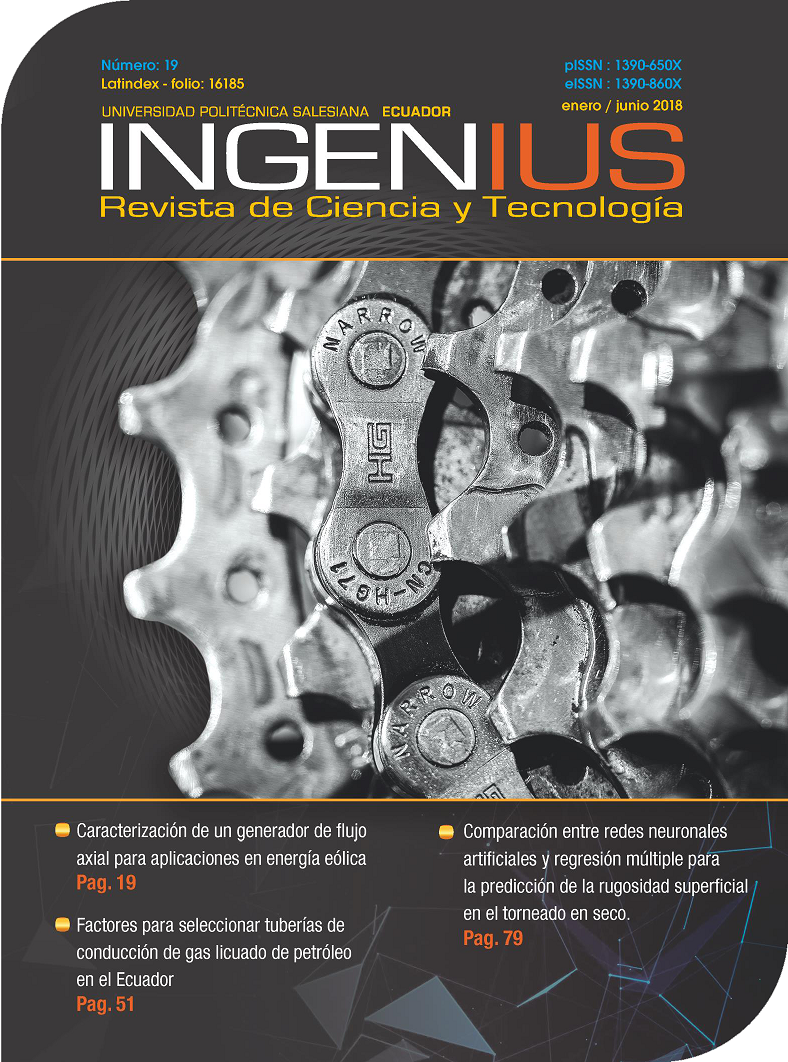Obtención de ACS con energía solar en el cantón Cuenca y análisis de la contaminación ambiental
Main Article Content
Abstract
Article Details
The Universidad Politécnica Salesiana of Ecuador preserves the copyrights of the published works and will favor the reuse of the works. The works are published in the electronic edition of the journal under a Creative Commons Attribution/Noncommercial-No Derivative Works 4.0 Ecuador license: they can be copied, used, disseminated, transmitted and publicly displayed.
The undersigned author partially transfers the copyrights of this work to the Universidad Politécnica Salesiana of Ecuador for printed editions.
It is also stated that they have respected the ethical principles of research and are free from any conflict of interest. The author(s) certify that this work has not been published, nor is it under consideration for publication in any other journal or editorial work.
The author (s) are responsible for their content and have contributed to the conception, design and completion of the work, analysis and interpretation of data, and to have participated in the writing of the text and its revisions, as well as in the approval of the version which is finally referred to as an attachment.
References
[2] F. Entrena, UF02012: Determinación del potecial solar, Malaga: ic editorial, 2013.
[3] J. G. Rios, «SCRIBD,» 2016. [En línea]. Available: https://es.scribd.com/doc/147294050/METODOS-PARA-CALCULAR-LA-POBLACION-FUTURA. [Último acceso: 18 diciembre 2016].
[4] R. Sampieri, C. Fernandez y M. Baptista, Metodología de la Investigación, 5 edición ed., Mexico: McGraw_Hill, 2010, p. 656.
[5] Estrategia Aragonesa de cambio climatico y energías limpias, Fondo Europeo de desarrollo regional; Gobierno de Aragon, Cámaras de Aragón, «Calculador de emisiones,» 16 junio 2017. [En línea]. Available: https://www.camarazaragoza.com/wp-content/uploads/2012/10/calculoemisiones.xls.
[6] J. G. Martinez Aguirre, «Caracterización y análisis estadístico de la Radiación solar directa para aplicaciones de Media y alta temperatura en areas circundantes a la OCP,,» Quito, 2015.
[7] J. Jimenez, H. Llivichuzca y J. Calle, Diseño, implementación y monitoreo de calentadores híbridos con energía solar - GLP y energía solar - calentadores electricos para la obtención de agua caliente sanitaria., Cuenca, Azuay, 2014.
[8] J. A. Duffie y W. Beckman, Solar Engineering of thermal processes, USA: Hoboke N.J., 2006.
[9] Afta-asociacion, «Afta-asociacion,» 26 noviembre 2017. [En línea]. Available: http://www.afta-asociacion.com/wp-content/uploads/Cap-4-Dimensionado-de-Instalaciones.pdf.
[10] C. D. Fuente, «Instalación de Colectores solares para suministro de ACS en Valencia,» Madrid, 2009.
[11] CTE y M. d. F. España, «Código Técnico de la Edificación de España,» junio 2017. [En línea]. Available: https://www.codigotecnico.org/images/stories/pdf/ahorroEnergia/DBHE.pdf.

